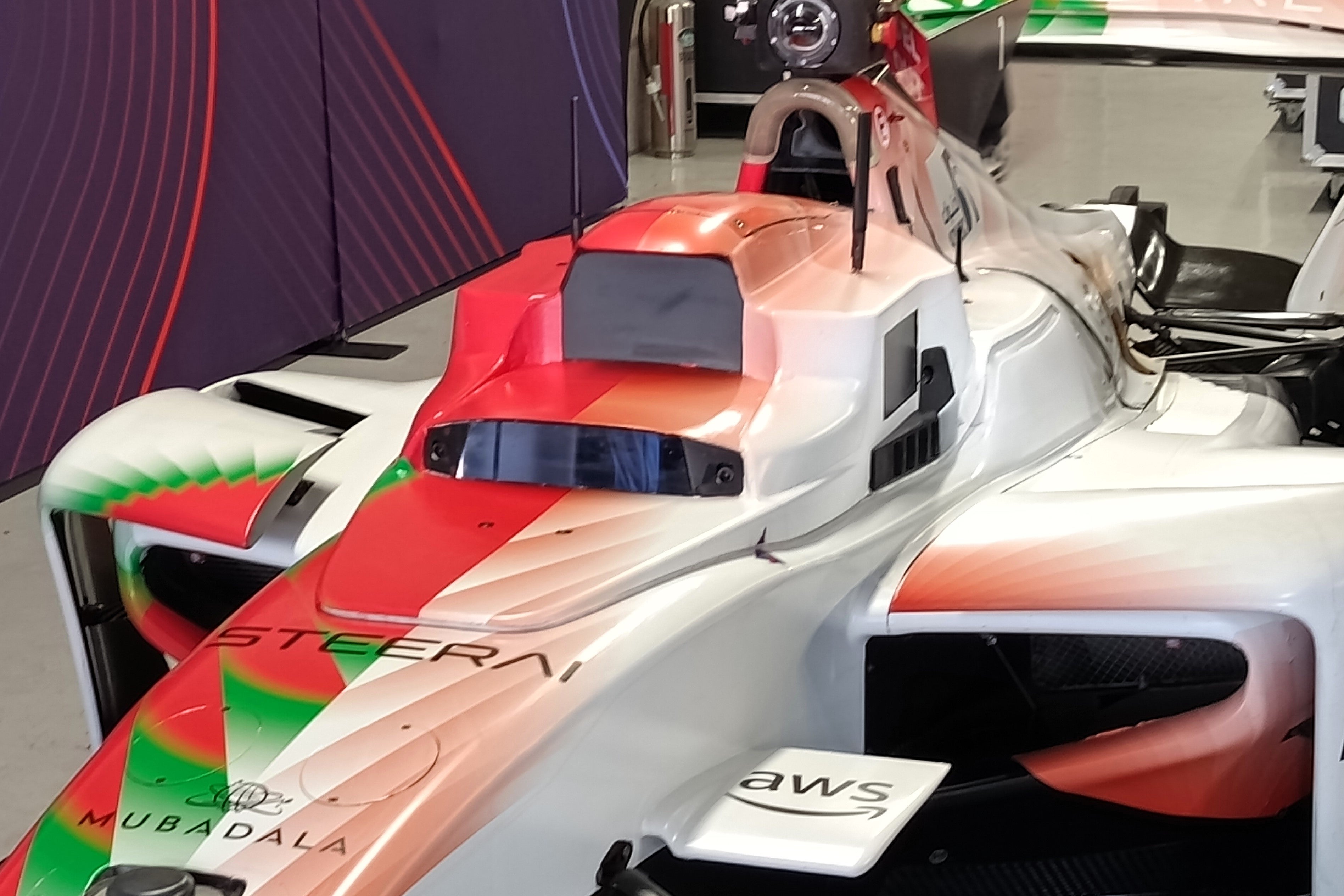
It was billed as ‘Man vs Machine’: a showcase of how artificial intelligence can now compete against humans in the physical realm. Nearly three decades after Garry Kasparov took on IBM’s Deep Blue computer in a game of chess, another Russian champion – former F1 driver Daniil Kvyat – was to represent humanity in a race against a self-driving car.
But on an overcast November morning in Suzuka, Japan, it soon became a demonstration that, on this track at least, AI is not about to overtake humans. The driverless car crashed before the race even began.
The AI-powered Super Formula car, which was the same as Kvyat’s vehicle but with a 90 kilogram computer in the cockpit, lost control after rounding a corner on its way to the start line. A broken rear wing and smashed suspension meant it returned to the garage on the back of a lorry.
The team who built the robo racer blamed “excessive wheelspin” out of turn 11 brought about by “colder than expected tyre temperatures”, combined with a loss of rear tyre pressure. This inability to intuitively gauge variable track conditions is one of the current limitations of this autonomous technology.
A skilled human driver would be able to sense that the rear-end was beginning to slide out, or spot that one tyre is more worn than the others. It is this transfer of “feeling into data” that is the biggest challenge, according to Giovanni Pau, the team principal of the ARRC-TII team that developed the stricken AI car.
“We’ve got to think of it as a two-year-old who is just learning to walk,” he told The Independent. “Before it can really run, it will take some time to figure it out.”

The computer in the cockpit is already processing more than a terabyte of data every minute, which is coming from the seven cameras, four radars and numerous sensors placed around the car. With some fine-tuning to the software and improvements to the hardware, Pau believes it will soon be able to match the best human racers.
“In one year it will be as fast as a human driver,” says the team principal, who is also a professor in autonomous robotics at the Technology Innovation Institute in Abu Dhabi. “In two years, it will be capable of competing safely against professional racing drivers.”
One vision for the future of this emerging motorsport is putting 10 humans on track alongside 10 AIs, potentially even as teammates. For Kvyat, who once raced in the same car as current Formula 1 champion Max Verstappen, he sees no problem with racing against an AI car.
“I don’t really think who I’m driving against,” he told The Independent ahead of the aborted race. “I see an obstacle and I try to pass it. But yes, it is unusual knowing there’s no driver.”

There are already 12 teams from around the world developing AI cars for A2RL, the world’s first autonomous racing league, whose inaugural event took place in Abu Dhabi earlier this year. Taking place at the Yas Marina Circuit, it was a largely successful exhibition of the concept of AI racing. But it was not without its own glitches.
When one of the cars crashed into the gravel, it prompted a yellow flag forbidding any of the cars still on track from overtaking each other. This safety measure had been programmed into the AI cars, but they took it too literally, forming a queue behind the stricken car.
While overcoming such issues are an inevitable part of these cars’ development, what is not yet sure is whether people will actually want to watch it.
The event in Abu Dhabi attracted 10,000 spectators, though this may be a false equivalence to actual human racing and is probably more comparable to the interest generated by Deep Blue vs Kasparov. The novelty of a machine taking on a human in a new realm will always attract interest, however people are not still watching computers take on other computers at chess – even if they are now vastly superiour to their human counterparts.
The Oxford-based philosopher Nick Bostrom, whose seminal 2014 book Superintelligence led to Stephen Hawking, Bill Gates and Elon Musk all warning about the existential risk of artificial intelligence, recently imagined a future world where there is virtually nothing that a human can do that an AI cannot do better.
But even in this “technologically mature” society, he noted, there are still things that robots could never replace humans at – like a child’s drawing for their parents. Another of these is the innate human desire to compete against other humans, be it taking part or watching.
Speaking on the topic in an interview with The Independent earlier this year, Professor Bostrom said he predicted AI sports may have a place among traditional sports but would be unlikely to replace human athletes.
“If there were different companies or teams producing robots with roughly equal resources in order to create an actual exciting battle, then I think that could be a niche,” he said. “But I still think a lot of people would prefer to watch humans compete.”

There are also plans to launch autonomous racing leagues for drones, dune buggies and boats, but it is not all about the competition. By pushing the limits of autonomous driving and AI research, A2RL hopes to advance innovation for self-driving vehicles through a “race-to-road” initiative.
It won’t be the last time AI takes on a human racing driver. It took several decades of development for a computer to beat Kasparov, but the astonishing rate of progress in recent years means it might not be long before one beats a human in a physical contest.

A decade ago, a warehouse in Helsinki played host to the first ever coding world championship, where teams programmed autonomous cars to race against each other. The cars and the track were all virtual, as it was inconceivable at that time for such an event to take place in the real world. Within three years, real cars were racing – albeit slowly – on real roads.
During the AI vs AI race on the morning before the AI vs human contest, the cars were reaching speeds of 200kph. And if it weren’t for the lack of helmets bobbing around the cockpit, they could have been mistaken for human drivers.
If this is the learning-to-walk phase, as Professor Pau put it, then right now it needs some encouragement. While spectators at the Suzuka Circuit weren’t treated to the same scintillating racing that F1 drivers Ayton Senna and Alain Prost once brought to this track, they did witness the first steps of a brand new sport.







